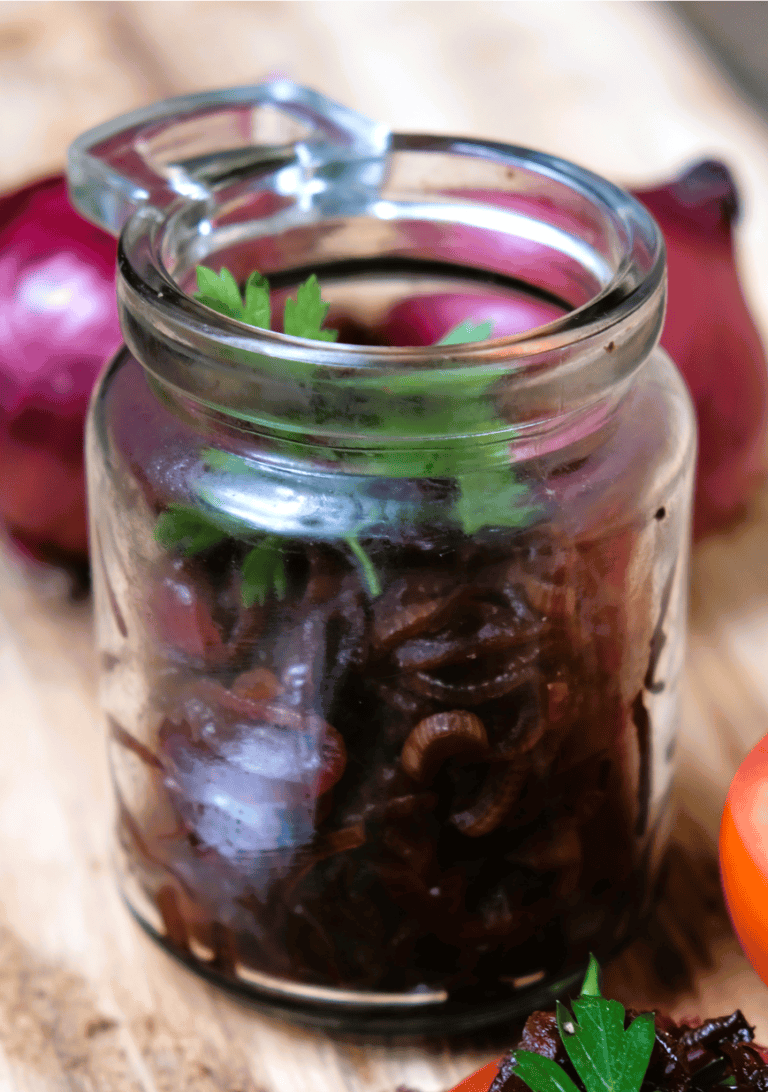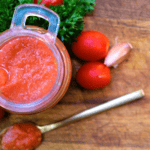I haven’t met many people in my life who don’t like caramelized onion. It’s a sweet, savory, simple, easy and delicious to anything from crackers, grazing boards, burgers, sandwiches or whatever you choose!
The only downer I’ve come across in the past with store bough caramelized onion is that sugar content, ohhh that sugar content.
So this is why I present to you, a cheaper, more flavorsome, lower sugar version of one of your favourite additions.
Whether you’re a seasoned chef or a kitchen novice, these caramelized onions will elevate any dish with their sweet, savory, and melt-in-your-mouth goodness. In just 45 minutes, you can transform humble onions into a culinary masterpiece that’s sure to impress.
What’s the sustainability talk on onions?
Onions and sustainability, what’s the go? Well the humble onion has many positive layers to it (pun intended) including having a low carbon footprint, low pesticide use and having an extremely long shelf life.
Do onions have a low carbon footprint?
Onions have a carbon footprint of 0.11 kg (0.25 lb) of CO2e per pound of produce. This is a very low carbon footprint in comparison to other vegetables, and is largely because onions can be grown locally, have a long shelf life, and often require few resources, such as pesticides, to grow.
Reducing Food Waste:
Caramelizing onions is a brilliant solution to combat food waste, especially when onions are slightly past their prime. Instead of discarding onions that may have started sprouting or have soft spots, transforming them into caramelized onions extends their shelf life and elevates their flavor profile.
When onions are caramelized, their natural sugars are intensified, resulting in a sweet and savory condiment or ingredient that enhances a wide range of dishes. From sandwiches and pizzas to pasta and omelets, caramelized onions add depth and richness, turning even the simplest meals into gourmet delights.
By embracing caramelization, individuals can significantly reduce their food waste footprint. Rather than contributing to the staggering amount of food wasted each year, they can maximize the use of every onion, minimizing landfill waste and conserving valuable resources. It’s a win-win situation where both taste buds and the environment benefit.
Local and Seasonal Sourcing:
Supporting local farmers and choosing onions that are in-season not only benefits the community but also promotes sustainability on a broader scale. When consumers opt for locally sourced onions, they reduce the distance traveled from farm to table, thereby lowering carbon emissions associated with transportation.
By purchasing onions from nearby farms, consumers contribute to the vitality of local economies, supporting small-scale producers and preserving agricultural heritage. This direct connection between consumers and farmers fosters a sense of community and reinforces the importance of sustainable agriculture practices.
Additionally, sourcing onions in-season aligns with the natural rhythm of agricultural production. By respecting seasonal cycles, consumers can enjoy onions at their peak flavor and nutritional value while reducing reliance on energy-intensive methods such as greenhouse cultivation or long-distance transportation.
Overall, embracing local and seasonal sourcing practices for onions not only benefits the environment and local economies but also ensures fresher, tastier produce for consumers. It’s a conscious choice that reflects a commitment to sustainability and supports the thriving interconnectedness of food systems.
Frequently Asked Questions:
- Why use a cast-iron pan or large skillet?
- Cast iron distributes heat evenly, promoting even caramelization.
- Can I use different types of onions?
- Yes, yellow or red onions work best for their sweetness, but you can experiment with other varieties.
- How do I prevent onions from burning?
- Stir frequently, adjust heat as needed, and add water if they start to stick.
- Can I add other seasonings?
- Absolutely! Try adding herbs, garlic, or a splash of different vinegars to play around with your flavour profile.
- How should I store caramelized onions?
- Store in the refrigerator for short-term use or freeze for longer storage. Ensure they’re in an airtight container to maintain freshness.
Tips for the best Caramelized Onions:
- Use a heavy skillet: Opt for a cast-iron pan or a heavy skillet to ensure even heat distribution for perfect caramelization.
- Slice onions evenly: Uniformly sliced onions ensure consistent cooking and caramelization.
- Stir frequently: Keep the onions moving in the pan to prevent burning and achieve even browning.
- Adjust heat as needed: If onions start to brown too quickly, lower the heat to prevent burning.
- Deglaze the pan: Adding a liquid such as water, stock, or wine towards the end helps to scrape up flavorful caramelized bits stuck to the pan.
- Experiment with flavors: Don’t hesitate to customize your caramelized onions with additional seasonings like herbs or balsamic vinegar for extra depth of flavor.
- Storage: Store leftover caramelized onions in an airtight container in the refrigerator for up to three days or freeze for longer storage.
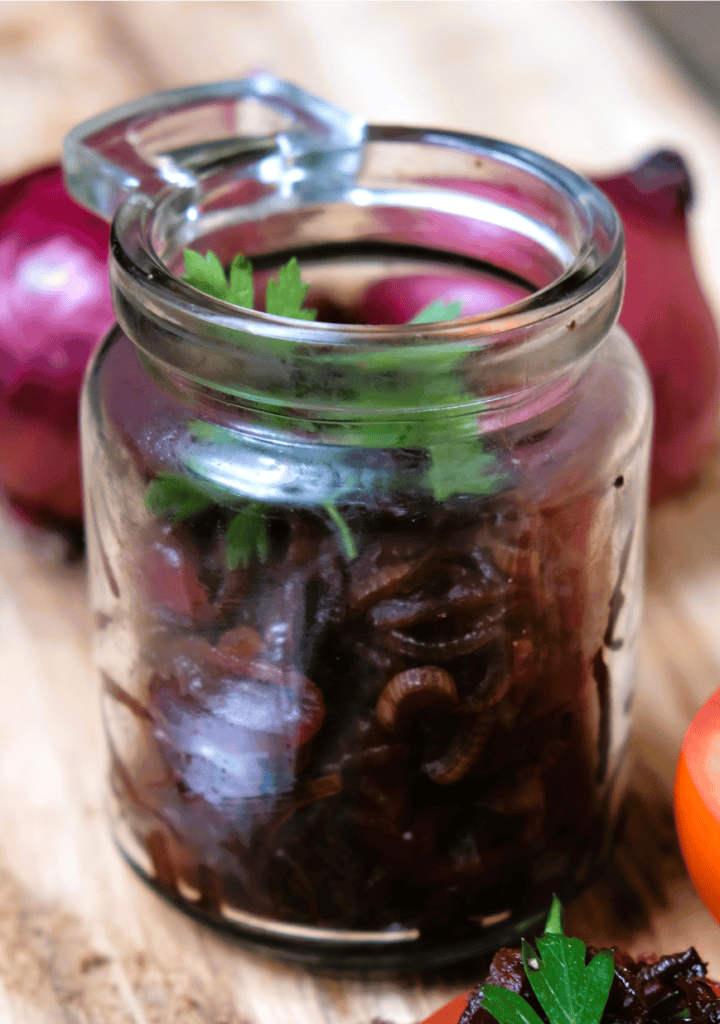
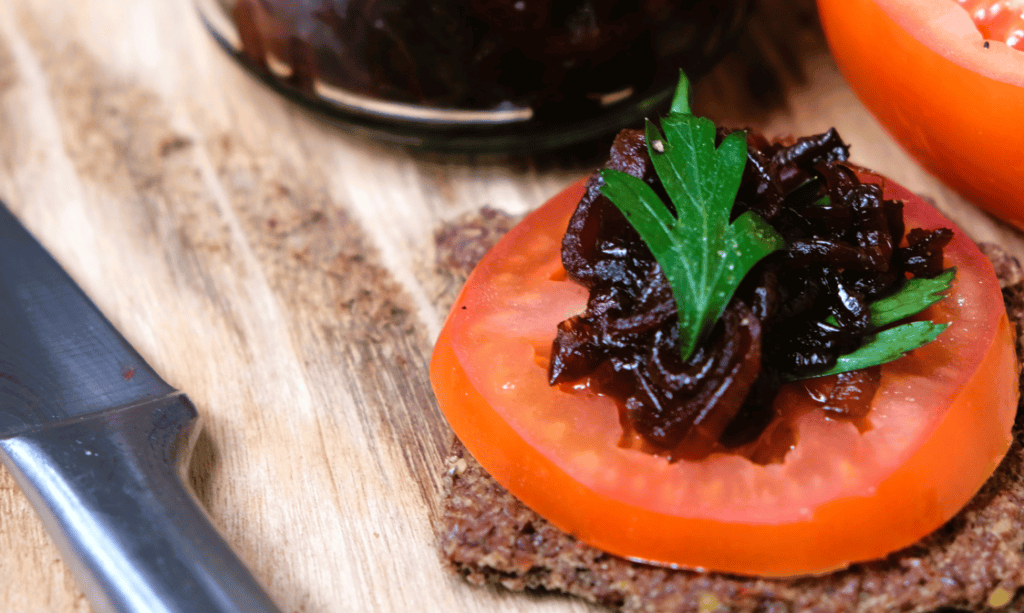
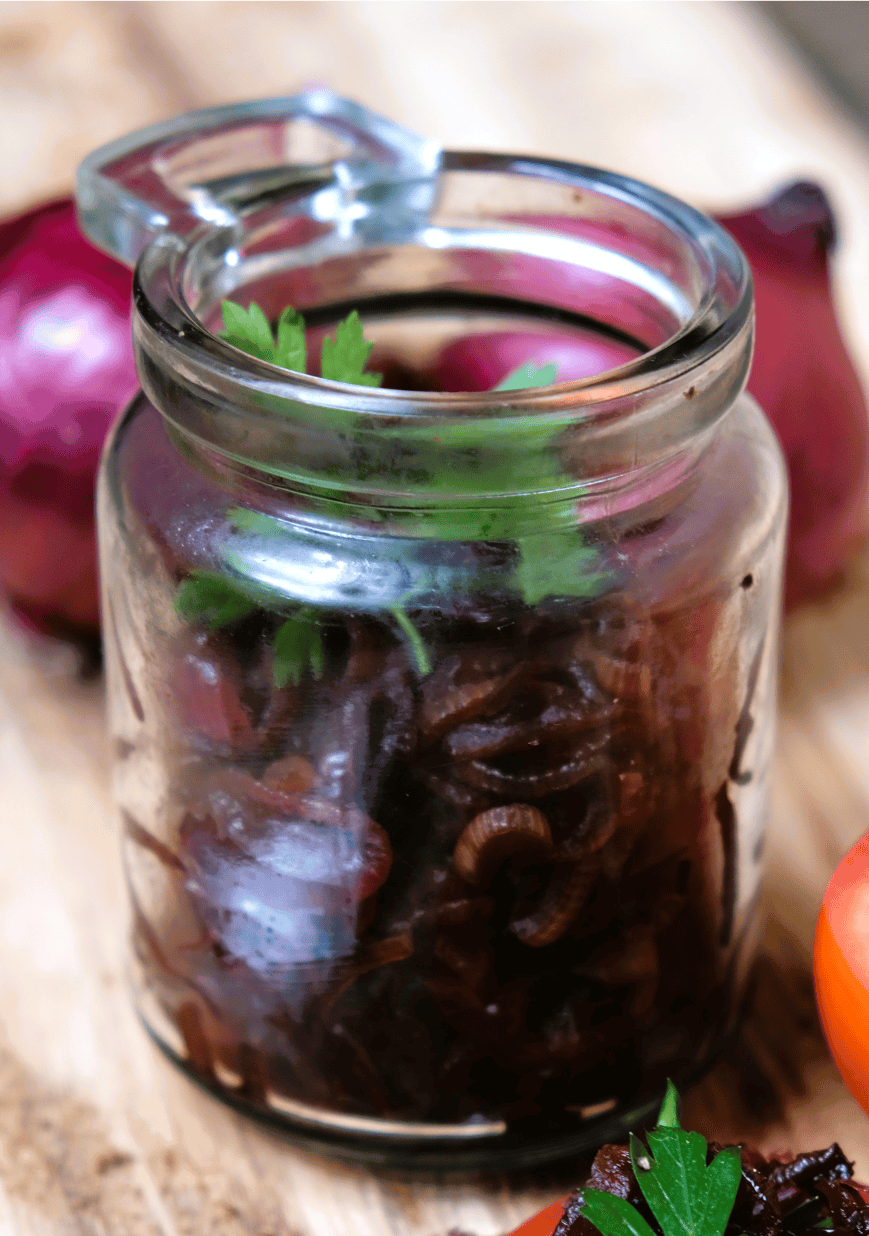
Carmelized Onion
Ingredients
- 1 pound onions 3 medium yellow or red (sliced ¼ inch thick)
- 2 tablespoons extra virgin olive oil
- ¼ teaspoon salt
- Optional splash of balsamic vinegar
Instructions
- Over medium-high heat, add the olive oil in a cast-iron pan or large, heavy skillet at least 12 inches in diameter. Swirl to coat the pan.
- Add the sliced onions, one-third at a time, and toss in the oil until properly coated.
- Sprinkle with ¼ teaspoon of salt and stir constantly for about 2-3 minutes or until they start to soften.
- Lower the heat to low and cook, uncovered for about 45 minutes or until the onions become very soft, slightly sticky and a deep golden brown. Stir the onions every 3-4 minutes.
- If they begin to stick to the bottom of the pan, add a tablespoon or so of water and simply scrape the bits off. Consider lowering the heat if they start to burn.
- Towards the end of the process, a few minutes before the onions are done to your liking, add 1-2 tablespoons of water, stock or wine to de-glaze the pan. When the liquid evaporates, they are done.
- Use immediately or cool to room temperature and refrigerate for up to three days or place in an airtight container, cover and freeze for up to one month.

